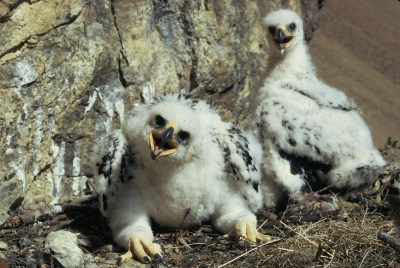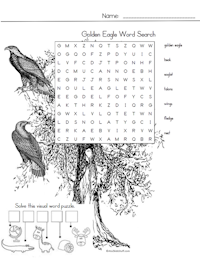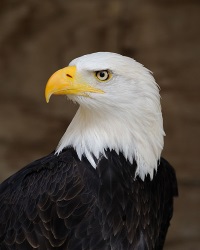Golden Eagle -- School-Age
Distribution
The golden eagle is the most widely distributed species of eagle. It is found in areas of North America, Europe, Asia, and the Northern part of Africa. In the United Kingdom golden eagles live in the open moorlands and mountains of Scotland.
Two species of eagle live in North America, and they are the largest eagles: the bald eagle and the golden eagle. In North America, golden eagles are primarily found in the Western States and Canadian Provinces from Alaska through Mexico.
Golden Eagle's are partial migrants. Golden Eagles living at the northern areas are more likely to migrate than those living farther south. Both eagle species in North America go north in the warm seasons and down to southern states and Mexico in the winter months.
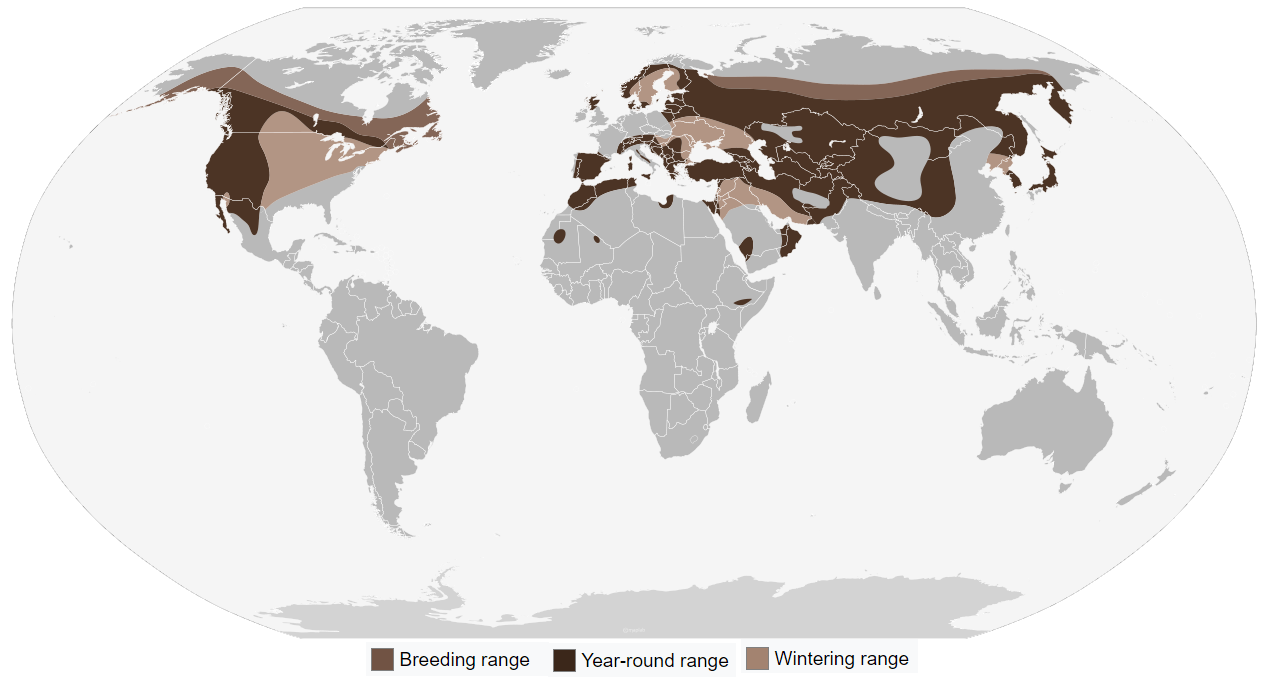

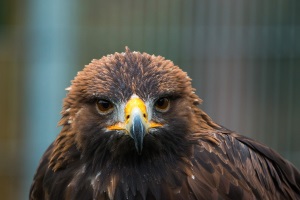




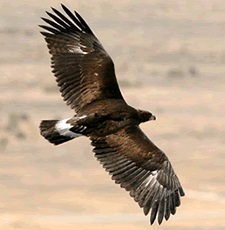 Golden eagle young are generally ready to fledge, or take their first flight by 7-11 weeks. The age of an eagle can be determined by its plumage.
Juvenile golden eagle's have distinct white patches on its wings and at the base of its tail. It will take it 4-5 years to acquire adult plumage.
Golden eagle young are generally ready to fledge, or take their first flight by 7-11 weeks. The age of an eagle can be determined by its plumage.
Juvenile golden eagle's have distinct white patches on its wings and at the base of its tail. It will take it 4-5 years to acquire adult plumage.